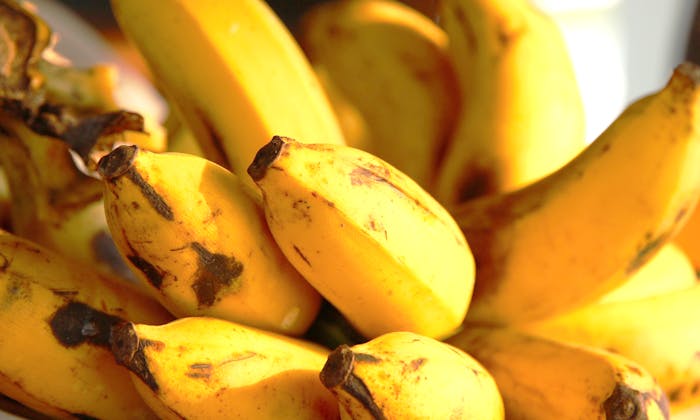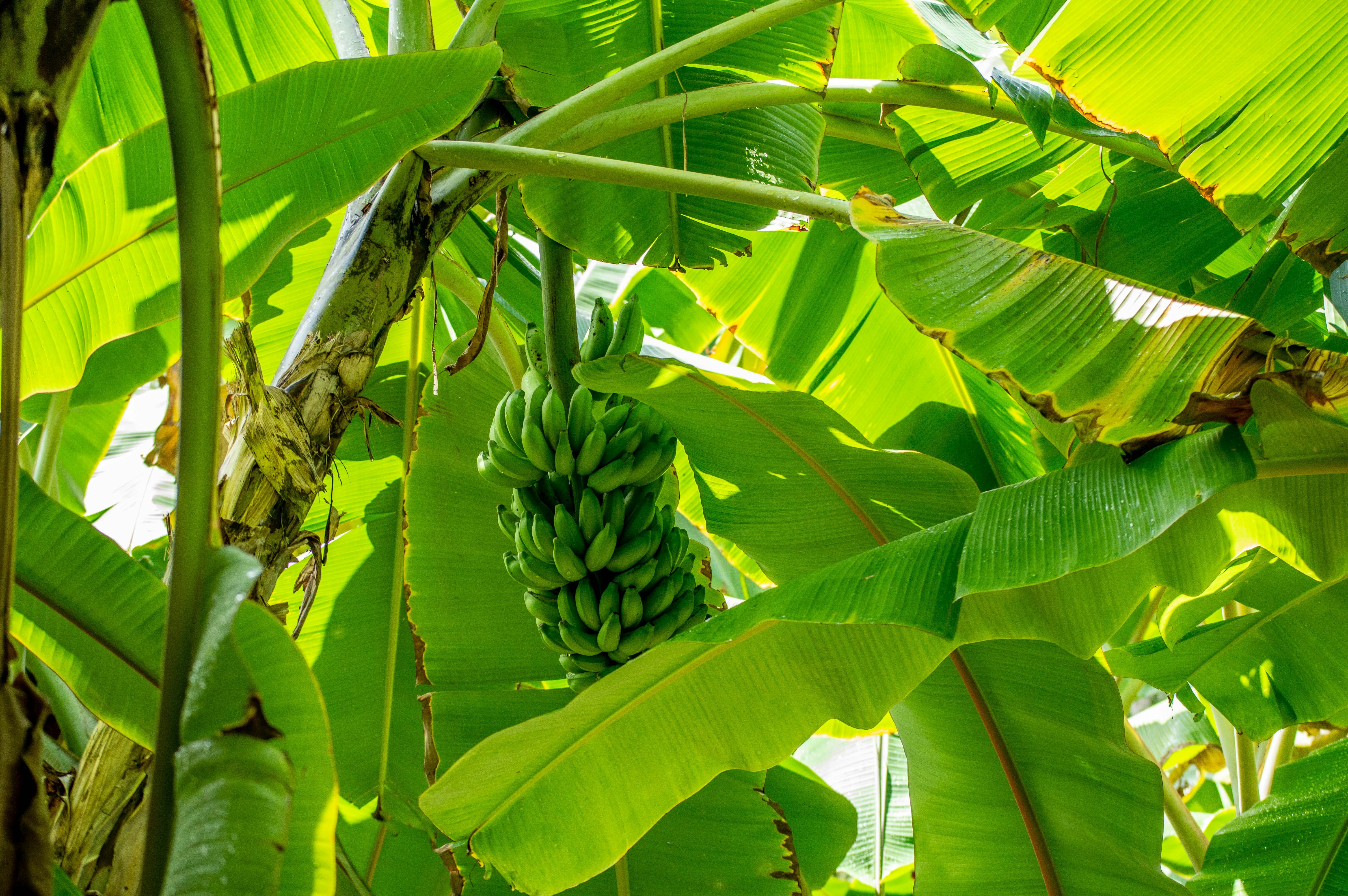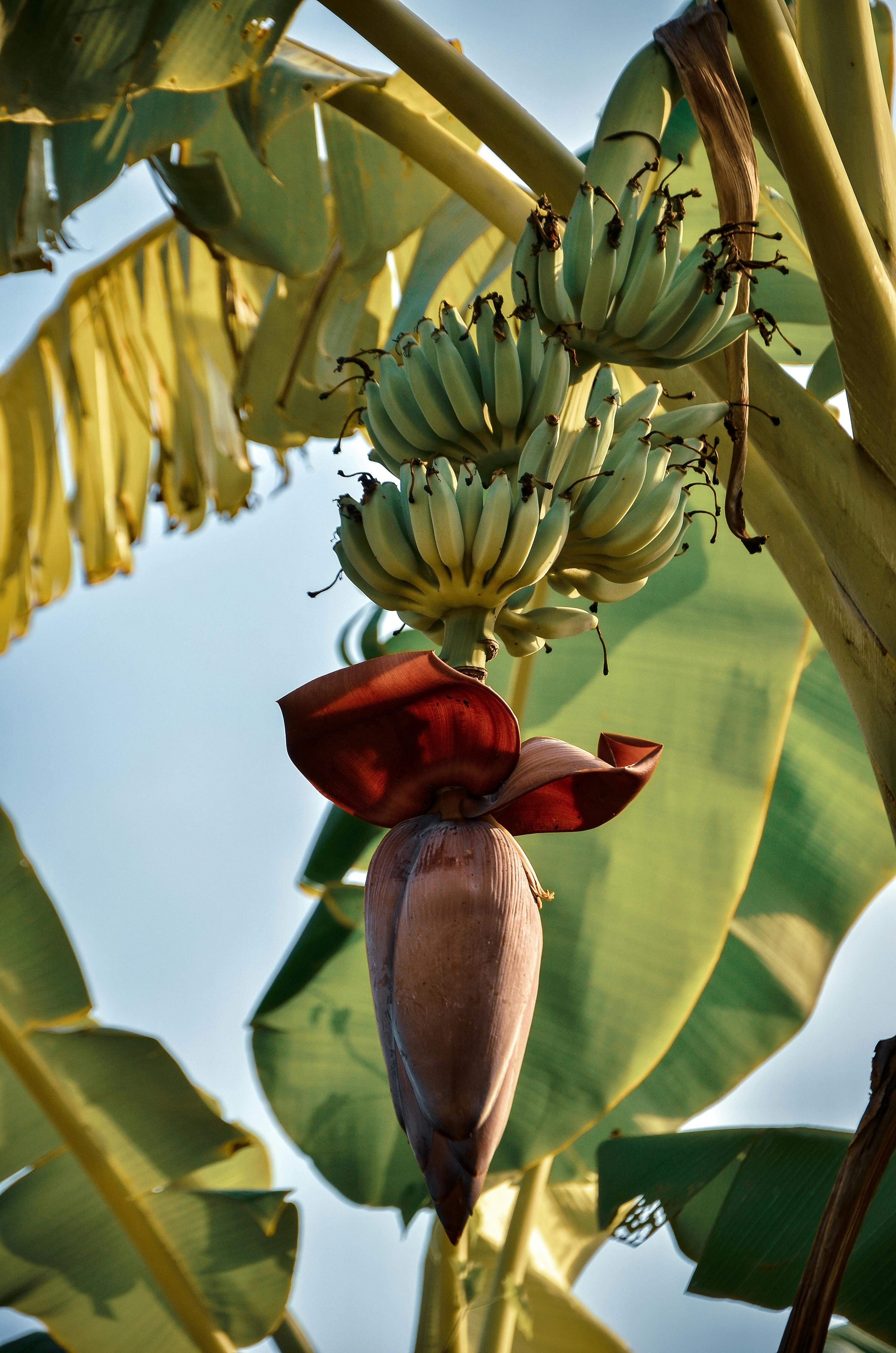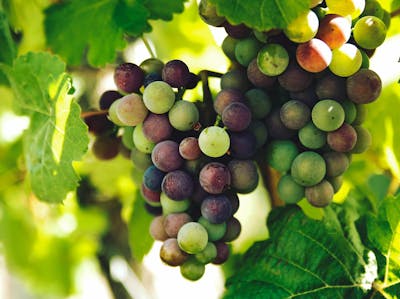Bananas are a great fruit to grow yourself. They grow fast, provide good shade and sprout prolifically.
Bananas are one of those fruits that the grocery store just doesn't meet our needs on. In my grocery store, I can only find at most 3 varieties: Cavendish ("Chiquita") bananas, plantains and sometimes "Lady Finger" bananas.
Your choices when you grow bananas are many times that. Here are just a few examples:
- Blue Java
- Bluggoe
- Barangan Bananas
- Cavendish Bananas
- Dwarf Jamaican
- Fehi
- Goldfinger Bananas
- Gros Michel
- Lady’s Finger Bananas
- Macho Plantain
- Manzano
- Nanjangud Banana
- Orinoco
- Pisang Raja
- Praying Hands
- Red Bananas
In many tropical places where banana trees are prevalent, the great broad leaves from banana trees are used as well. They aren't used as food, but as plates and food wrappers. Banana leaves can also be made into a paper, either industrially or by hand.
Why Grow Bananas
A phrase I read at least a decade ago that stuck with me: "Bananas represent everything that is wrong with our modern food web," and this is exactly why it is a great idea to grow your own.
Bananas are a very healthy food. Every athlete knows they are a great source of potassium. Although they are mostly carbohydrates as far as macronutrients are concerned, they contain lots of good starches that help moderate blood sugar and are heart healthy. Eating a banana makes you feel full in a way disproportionate to the amount of calories they contain.
It might sound so perfect, but this amazing fruit has a dark side. All bananas are clones. This means as the diseases and pests that attack them evolve to attack better, they are not able to adapt. Today, the Cavendish banana is the most common commercial banana. A hundred years ago it was the far superior, "Gros Michel", which has nearly become extinct due to Panama disease, which Cavendish is immune to.
When plants are not allowed to evolve, we have to evolve for them, by supplementing their defenses with chemicals. Industrial banana production uses more chemicals than any other agriculture product, except cotton. In the tropical countries where they are grown, those chemicals easily find their way washed into waterways and the ocean. Humans have destroyed 60% of Costa Rica's coral reefs, and these chemicals are a major contributor.
The workers in the industry also do not fare well. I toured Costa Rica a few years ago and our guide described the housing provided to the workers by their employer. He painted this picture as a demonstration of how well they were treated, but there are two things wrong with that: a) this was a talking point specifically because of the difficulties these workers are known to experience, b) companies like to control housing because it makes it harder for employees to leave when quitting also means automatic eviction.
Bananas are very cheap to buy in the store. A banana is like a meal for 19 cents when a loaf of bread costs $2.50. Workers receive about 4-9% of that, or about a penny for every banana sold. That happens because there are only a handful of producers in the world, and they are all very large agribusinesses.
The list of issues is extensive, one more that begs mentioning is deforestation. Bananas are grown in the tropics, so of course it involves extensive destruction of our precious rain forests. The forests are cut down to make room for the trees. The soil is eroded and destroyed by the chemicals used to grow them. Flooding increases around them, increasing erosion in their surroundings and downstream as well leading to even more soil erosion.
All that said, if you want to combat these problems, grow your own bananas, but do it the permaculture way: use organic methods, compost, and efficient watering. Prevent the packaging waste that is created by the industry during production and transport. And enjoy your bananas.
About the Banana Tree
It makes sense when you think about it. Banana trees aren't woody. Their trunk is a "pseudostem" that grows out of a "corm". A pseudostem is a rolled up leaf. Corms are very similar to bulbs or tubors, they let the plant live dormant underground when growing conditions become difficult.
Banana trees are tropical. They were probably first domesticated in Papua New Guinea. The ones we eat are seedless, which tells you they are likely hybrids. In the U.S., we haven't developed a diverse market for bananas, as opposed to apples where we have many varieties, we tend to think of bananas only as either "Bananas" (sweet) or "Plantains" (savory). Plantains are used more like starchy vegetables than like fruits.
In many other countries, especially Southeast Asia and India, banana varieties are more significant and they tend to not even make the binary distinction between sweet and savory bananas, but to talk specifically about the variety at hand. All that is to say, there isn't even one specific hybrid to point to, the world market is made up of many different hybrids of bananas.
Propagating Bananas
Edible bananas are all seedless, even the ones we grow at home. This means they all come from clones. Bananas are very easy to clone. For this reason, if you want to grow bananas and you have a friend or neighbor growing them, you should just ask them for a pup and save $30.
Bananas love to send up pups from their corm. Just look around the base for little shoots. When these get to about 3 feet tall, you can dig it out and put it in soil and have your own banana tree. It will take a few years to start producing fruit though.
Care Of Banana Trees
Bananas are tropical plants, so it is no surprise they like plenty of water and plenty of sun. They are also herbaceous, fast growing plants, which tells us they need lots of nutrition.
If you live in a windy area, you should take special care when you buy them to pick a variety that is resistant to wind problems. They have very broad leaves that pick up the wind and can snap when the Santa Ana winds roll through. Try to pick a location sheltered from the winds.
Banana trees are sun-loving and need a minimum of 6 hours of sunlight. But on the hottest, sunniest days of the year the leaves can scorch. Some varieties are more resistant to intense heat than others. The risk is mostly that the edges of the leaves will burn, becoming dry and curled, without too much harm coming to the plant.
Banana trees are often found in clusters, they grow well together. Being tropical plants, they like moist air. In California, that can be a problem, growing them close together can help the leaves retain moisture. It also helps to mist the leaves every day during the growing season (Spring to Fall).
From Spring to Fall you have to water banana trees a lot and provide them with plenty of food.
Growing Banana Trees In Containers
Bananas do well in containers, but they should be large, at least 15 gallons. Avoid using a terracotta pot since it wicks out moisture, instead use a glazed or plastic pot.
Many people grow ornamental bananas in containers, but you can also grow fruiting bananas in containers. Container plants need even more food and water since the roots are not able to grow and develop as much.




